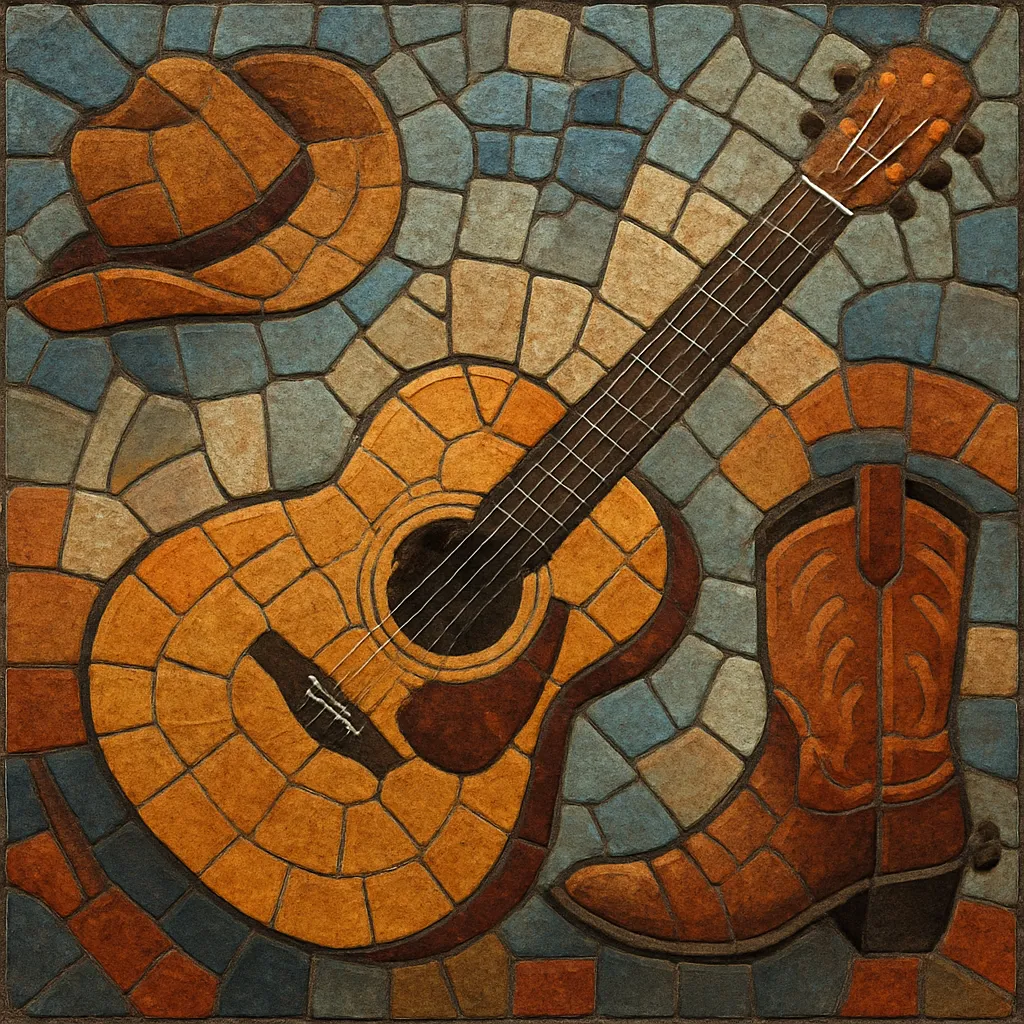
Classic country refers to the traditional sound of American country music established from the 1940s through the 1970s, before the genre’s heavy pop crossover of later decades. It foregrounds storytelling, plainspoken vocals, and clean, twangy instrumentation such as acoustic guitar, Telecaster-style electric guitar, fiddle, pedal steel, upright or electric bass, piano, and restrained drums.
Hallmark rhythms include the two-step (in 2/4), the steady 4/4 shuffle, the “train beat,” and the country waltz (3/4). Harmony is typically diatonic and rooted in I–IV–V progressions with occasional secondary dominants and simple turnarounds. Lyrically, classic country centers on love and heartache, rural and working-class life, faith, family, drinking and redemption, and the open road. Production is intimate and voice-forward, ranging from the raw honky-tonk bar-band feel to the smoother Nashville sound with tasteful strings and backing vocals.
Classic country crystallized during the 1940s as “hillbilly” and old-time stringband traditions met blues, gospel, and Western swing. Radio barn-dance programs and the Grand Ole Opry helped standardize repertoire and performance styles, while honky-tonk venues shaped a harder-edged sound built for small bands, amplified guitars, and songs about everyday struggle and heartbreak.
The 1950s brought iconic songwriting and vocal stylists who defined the idiom’s directness and emotional clarity. At the same time, Nashville’s studio system matured, refining arrangements and recording techniques. Even as rockabilly and early rock ’n’ roll rose, classic country’s core remained: sturdy song forms, twangy leads, and lyrical storytelling.
Nashville producers introduced smoother textures—background vocals and strings—without abandoning the core country language. In parallel, the Bakersfield scene favored punchy, Telecaster-driven arrangements that reclaimed the bar-band grit of honky-tonk. Together, these currents broadened classic country’s palette while preserving its songcraft-first ethos.
By the 1970s, classic country’s values influenced outlaw country and, later, Americana and neo-traditional revivals. As country-pop grew in prominence, “classic country” became both a historical era and a radio format celebrating the foundational sound and artists. Its fingerprints remain audible across country rock, heartland rock, red dirt, and modern traditionalist movements.

